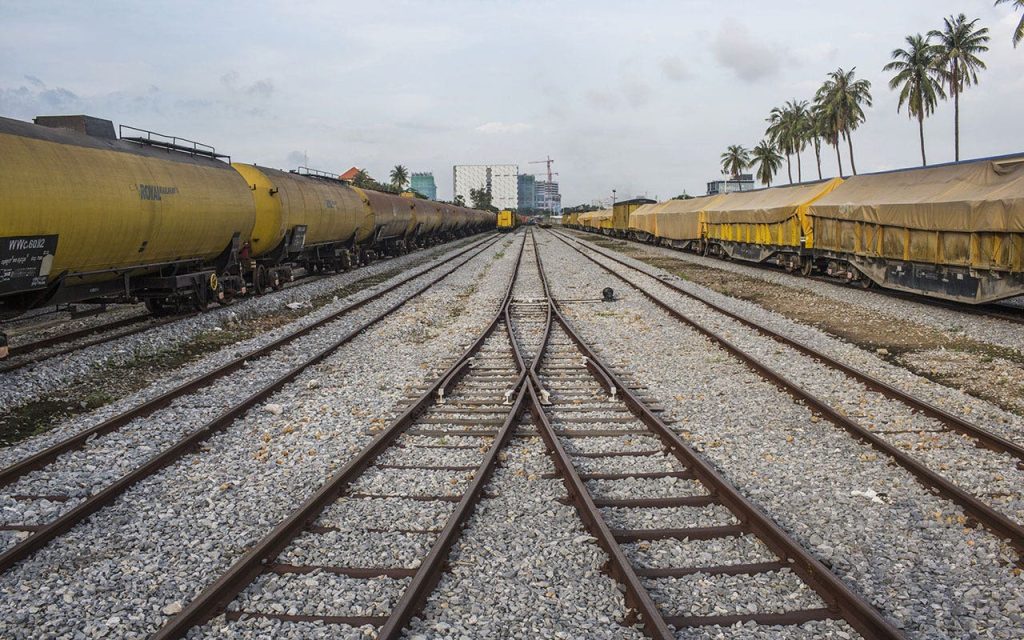A train and bus collision in northwestern Cambodia resulted in 45 people being injured, with five in critical condition. The crash occurred when a bus attempted to cross the tracks despite the oncoming train loudly sounding its horn. The train hit the middle of the bus, pushing it several meters, while the bus driver fled the scene, leaving behind injured passengers. Police chief Gen. Sar Theng stated that there used to be a barrier at the rail crossing, but it had broken and not yet been replaced. He noted that it is not uncommon for rail crossings in Cambodia to lack safety barriers.
All of the bus passengers were Cambodians who had hired the vehicle for a visit to a mountain nature resort. Sar Theng emphasized that responsible driving was essential to prevent such incidents, as the train engineer typically sounds the horn when approaching populated areas and road junctions to alert people to stay away from the tracks. He placed the blame on the bus driver for ignoring the warning signal and causing the accident. Reports from Cambodia’s national police and Ministry of Public Works and Transportation indicated that nearly 1,600 people died in road accidents in the country last year, highlighting the importance of adhering to traffic laws and safety measures to prevent further tragedies.
The collision at the rail crossing in Krakor district highlighted the dangers posed by inadequate safety measures and the importance of driver responsibility on the roads. The broken barrier at the crossing and the lack of safety barriers at many rail crossings in Cambodia underscored the need for infrastructure improvements to enhance public safety. The incident served as a reminder of the potential consequences of negligent driving and the critical role of drivers in ensuring the safety of passengers and other road users. Authorities emphasized the importance of heeding warning signals and proceeding with caution at rail crossings to prevent accidents like the one that occurred in northwestern Cambodia.
The train and bus collision resulted in significant injuries to passengers, with five individuals in critical condition as a result of the crash. The bus driver’s decision to attempt crossing the tracks despite the oncoming train sounding its horn was identified as the primary cause of the accident. Gen. Sar Theng stressed the importance of responsible driving and adherence to safety regulations, attributing the collision to the bus driver’s failure to heed warning signals. The incident highlighted the need for enhanced safety measures at rail crossings and raised awareness about the risks associated with negligent driving behaviors that could lead to serious accidents and injuries.
The train and bus collision underscored the need for improved safety infrastructure and heightened driver awareness to prevent accidents on the roads. With nearly 1,600 deaths reported in road accidents in Cambodia last year, the importance of prioritizing road safety and compliance with traffic laws was emphasized by authorities. The incident served as a tragic reminder of the potential consequences of reckless driving and the crucial role of drivers in ensuring the well-being of passengers and other road users. Efforts to enhance safety measures at rail crossings and promote responsible driving practices were highlighted as essential elements in preventing similar accidents and reducing the risk of injuries and fatalities on the roads.
The collision between the train and bus in northwestern Cambodia was a stark reminder of the dangers posed by reckless driving and inadequate safety measures on the roads. The incident, which resulted in 45 injuries and five individuals in critical condition, prompted calls for enhanced safety regulations and infrastructure improvements to prevent similar accidents in the future. The bus driver’s disregard for warning signals and failure to yield to the oncoming train was identified as the primary cause of the collision, emphasizing the importance of responsible driving behaviors in ensuring road safety. Authorities emphasized the need for heightened awareness, adherence to traffic laws, and enhanced safety measures to reduce the risk of accidents and injuries on Cambodia’s roads.


